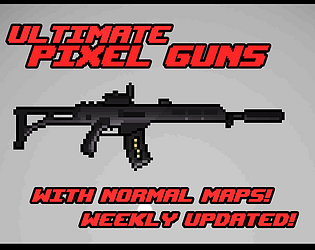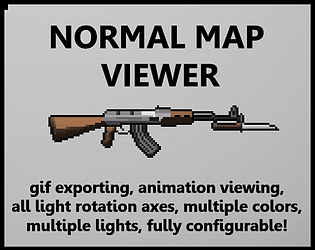Transfer was completed via the support e-mail. Thanks for the help!
LuiWolff
Creator of
Recent community posts
Hello, a while ago I uploaded a project titled Inkwell (black-tulip.itch.io/inkwell) to this studio account. The group effort is no longer active, so I'd like to move that submission to my personal account ( yurinikolai.itch.io) while leaving the rest of the projects there. I thought of deleting and reuploading it, but I did not want the people who had already purchased the pack to lose it. Is it possible to transfer only that project to my account while keeping purchasers, favourites etc? I also sent an e-mail to support about this last week, but figured it would be good to also make a post here so that I can confirm ownership with both accounts. Please transfer only Inkwell and leave the other projects on this account.
Hello!
1. About gif quality. The GIF format is limited to 256 colors, meaning a lot of the quality considerations come down to quantisation: which algorithm to use to select which colors to keep. Our current quantisation algorithm is median, meaning some colors may lose some character. For future versions we'll implement the Octree algorithm, which should give you a lot better and more consistent results :)
2. About pixel art lighting. The program, right now, already has pixel art lighting working! To make sure your lighting is rendered in a pixel-perfect way, it's very important to use the correct pixel density: that means don't rescale your pixel art. One pixel should not be 4 or 9 or 16 pixels in a square, but a proper, single pixel. If you do that the lighting will work perfectly.
3. Cel shading. While we hadn't intented to implement cel shading, it's a great idea and shouldn't be very difficult to do. We'll consider adding it in future updates!
4. The normal map was manually drawn using Aseprite. To manually draw normal maps I recommend using a reference picture (search "normal map sphere" or "normal map reference" and you should find it). The most important things when manually drawing normal maps are (i) thinking in 3d (paint based on the direction the pixels are facing - normals - and not where they are on the image, and (ii) iterating, as you can often improve on maps by testing and tweaking.
Thank you for your comment, and have a nice day!
This is SO awesome. I'm very interested in learning this kind of code. You're using Godot's shader language based on GLSL, yes? Do you have any suggestions for resources and/or projects to start learning that?
Also, any plans for including other kinds of stellar objects with slightly different shapes? Stuff like black holes with smaller or different accretion disks, or different planets and/or gas giants with different rings, or even stuff like neutron stars or white dwarfs with polar jets? I'd offer my full support to develop those, but I'm clueless in shaders.




